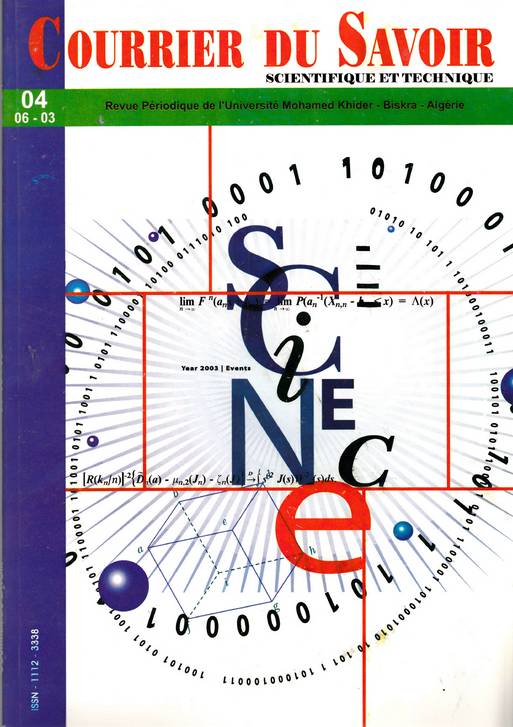ELABORATION DU REFRACTAIRE DE L’OXYDE DE MAGNESIUM DE HAUTE PURETE EXTRAIT DE LA DOLOMIE
Résumé
Le frittage de l’oxyde de magnésium de haute pureté (99.75%) ne s’effectue généralement qu’à des températures supérieures à
1600°C. Pour arriver à diminuer la température de frittage, la matière doit subir des traitements préliminaires tels que la
réduction de la taille des grains, la température de calcination, la pression de compactage, etc. Dans ce travail, nous avons misé
sur l’optimisation de tous ces facteurs réunis. Nous avons trouvé qu’à la température 800°C la morphologie des grains se
transforme totalement pour passer d’une forme de feuillet d’une taille moyenne de 10 μm à une forme sphérique d’une taille
moyenne de 0.1μm seulement. Ce mode de traitement de la poudre nous a permet d’atteindre la densité théorique de frittage de
l’oxyde de magnésium qui vaut 3.58 g/cm3 à une température inférieure à 1500°C.
Mots clés : Oxyde de magnésium, haute pureté, calcination, frittage, densité de frittage.
ABSTRACT
The sintering of magnesia of high purity (99.75 %) is made generally only at high temperatures more than 1600°C. To
decrease the sintering temperature, the powders of material must undergo preliminary treatment such as the reduction of the
size of grains, the temperature of calcination, the pressure of pelleting, etc. In this work, we have operated on the optimization
of all these factors. We found that in the temperature 800°C, the morphology of grains is transformed totally to pass of a shape
of leaf of an average size of 10 μm in a spherical shape of an average size of 0.1μm only. This mode of treatment of the
powder has allows to reach the theoretical density of caking of the oxide of magnesium which is worth 3.58 g / cm3 in a lower
temperature at 1500°C.
Keywords: Magnesia, high purete, calcination, sintering, sintering density.
Références
réfractaires, Paris, Gautier-Villars, (1966) 19.
2. G. Alliprandi, Matériaux réfractaires et céramiques
techniques, Edition SEPTIMA, Paris, (1979) 86.
3. A. N. Copp, Ceram. Bull. , 67 (1988)910.
4. W. D. Kingery, H. K. Bowen and D.R. Uhlman,
Introduction to ceramics, Sd editions, John Wiley and
Sons, (1976) 448.
a
b
c
d
M.T. Soltani & al.
88
5. G. K. Layden and M. C. Mcquarrie, J. Am. Ceram.
Soc, 42 (1959) 89.
6. H. J. S. Kriek, W. F. Ford and J. White, Trans. Brit.
Soc. ,58 (1959) 1.
7. C. M. Pathak and V. K. Moorthy, Trans. Ind. Ceram.
soc. , 35 (1976) 89.
8. F. Nadachovski, Ceram. Int. , 2 (1976) 55.
9. K. Itatani, M. Nomura, A. Kishioka and M.
Kinoshita, J. Mat. Sci. , 21 (1986) 1429.
10. S. ACHOUR, M.T. SOLTANI and A. HARABI,
CIMTEC’98, 14-19th june 1998 Florence, Italy.
11. M.T. SOLTANI et A. BOUTARFAYA, III ieme
colloque national de l’ELACAM, 10-11 avril 2001,
Biskra.
12. J. Green, J. Mat. Sci. , 18 (1983) 637.


